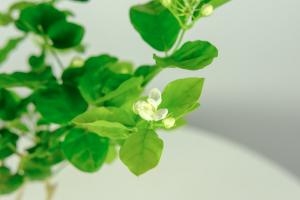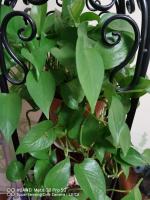Introduction
Native plants are a vital part of any ecosystem, and one of their essential features is their ability to conserve water. By retaining water, these plants can not only survive but thrive in harsh climates, and their conservation efforts help to maintain and regulate local water systems for the benefit of all life around them. In this article, we will explore how native plants can conserve water using various techniques.
Drought tolerance
The first way that native plants conserve water is through their natural drought tolerance. These plants have evolved over time to survive in areas with limited water, which means they have adapted to store water in their roots, leaves, and stems. Some of these plants can go long periods without water, making them ideal for climates with infrequent rainfall or arid environments. Their leaves may be tough and waxy, which helps them to retain moisture and prevent evaporation from the surface.
Reduced transpiration
Another technique that native plants use to conserve water is through transpiration reduction. Transpiration is the process of water moving through a plant and evaporating from the leaves into the atmosphere. Native plants often have smaller leaves, fewer leaves, or thicker cuticles, which all reduce the rate of transpiration. By reducing the amount of water that is lost through transpiration, plants can conserve more of it for themselves and the surrounding ecosystem.
Deep roots
Native plants also often have deep roots that allow them to tap into underground water sources. These roots can reach water that is deeper underground, which means that the plant can survive even when the topsoil is dry. Additionally, deep roots help to prevent erosion and provide stability to the soil, allowing more water to infiltrate over time. This technique can benefit the entire ecosystem by drawing water from underground sources and preventing flash floods and other erosive events.
Plant spacing
Plant spacing is another way that native plants conserve water, particularly in areas with high rainfall. Planting vegetation too close together can create competition for water and other resources, reducing the overall supply. By spacing plants further apart, they can reduce the intensity of the competition for water and create a more stable ecosystem. Additionally, this provides more space for water to infiltrate the soil and replenish underground resources.
Conclusion
Native plants play a crucial role in the maintenance and regulation of water systems in various ecosystems. From drought tolerance to deep roots and optimized plant spacing, these plants have unique features that allow them to thrive in even the harshest of environments. By examining how native plants conserve water, we can learn valuable lessons about the sustainable management of our water resources and the ecosystems that depend on them.

 how many times do yo...
how many times do yo... how many planted tre...
how many planted tre... how many pine trees ...
how many pine trees ... how many pecan trees...
how many pecan trees... how many plants comp...
how many plants comp... how many plants can ...
how many plants can ... how many plants and ...
how many plants and ... how many pepper plan...
how many pepper plan...































